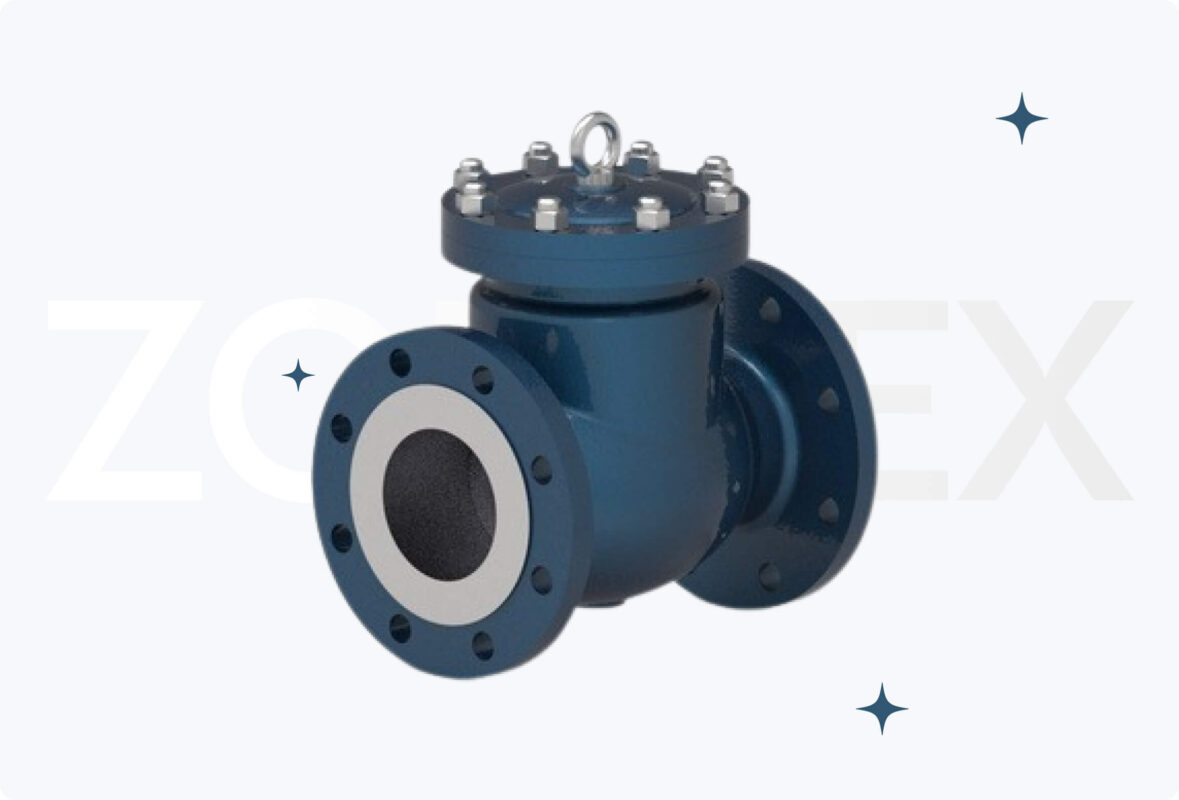What is a check valve?
A check valve (also known as a non-return valve) is a backflow prevention device that allows fluid to pass in only one direction and blocks reverse flow. Its main function is to prevent the backflow of liquids or gases in piping systems, thereby protecting pumps, tanks, heat exchangers, and other system components.
These valves are widely used in potable water networks, heating systems, industrial process lines, wastewater systems, chemical processing installations, and circuits carrying compressed air and technical gases.
How does a check valve work?
The operating principle of a check valve is based on flow pressure. When the fluid moves in the correct direction, the closing element (such as a disc, ball, or piston) lifts and allows free flow. If the flow attempts to reverse, the element drops or is pushed against the seat, sealing the valve and preventing backflow.
Depending on their design, the main types of check valves are:
Ball check valve
Swing check valve
Piston check valve
Lift check valve (vertical)
Diaphragm check valve
Some models include emergency shut-off functionality or are equipped with a spring to enable faster and more secure closure.
Advantages of check valves
Check valves offer numerous operational advantages:
System protection – prevent damage caused by fluid backflow
Self-operating – function automatically without external power or control
Variety of designs – adaptable to virtually any type of installation
Vertical or horizontal installation – depending on the model and application
Compact size and low weight – especially in wafer-type versions
Corrosion and pressure resistance – wide range of available materials (stainless steel, brass, cast iron, PVC)
Applications of check valves
Check valves are widely used in various sectors and systems where unidirectional flow and backflow prevention are critical:
Pumping systems – to protect pumps from water hammer and reverse flow
Water supply and wastewater networks
Industrial process installations handling liquids, steam, or gases
Compressed air systems and technical gas lines
Water treatment and purification plants
Central heating and cooling systems
Summary
Check valves are indispensable components in any system where protection against fluid backflow is required. Thanks to their simple and reliable design, as well as the wide variety of available types and materials, they can be easily adapted to all kinds of installations.
Selecting the appropriate check valve enhances operational safety and extends the overall service life of the system.
Models and production range of Zondex check valves
Zondex Engineering offers a wide range of check valve models, including the following references:
701, 702, 703, 704, 705, 706, 707, 708, 709, 710, 711, 712, 713.
Available nominal diameters: DN 40 to DN 600
Working pressure range: PN 10 (1.0 MPa) to PN 63 (6.3 MPa)
Valve bodies can be manufactured in a variety of materials, depending on the working medium and service conditions:
🔹 Ductile iron
– EN-GJS-400-15 / GGG40
🔹 Carbon steel
– ASTM A216 WCB, A105, Q235 / P235, A216 WCC
🔹 Low alloy steel
– ASTM A352 LCC, LCB, LCI, LC2
– ASTM A217 WC6, WC9
– ASTM A182 F11
– ASTM A350 LF1 / LF2 / LF3
🔹 Stainless steel (corrosion-resistant)
– A351 CF8 / AISI 304 / A182 F304
– A351 CF8M / AISI 316 / A182 F316
– A351 CF3 / AISI 304L / A182 F304L
– A351 CF3M / AISI 316L
– AISI 904L, AISI 316Ti, AISI 321, AISI 310S
🔹 Special steels (duplex)
– Duplex 2205
– Duplex 2507





